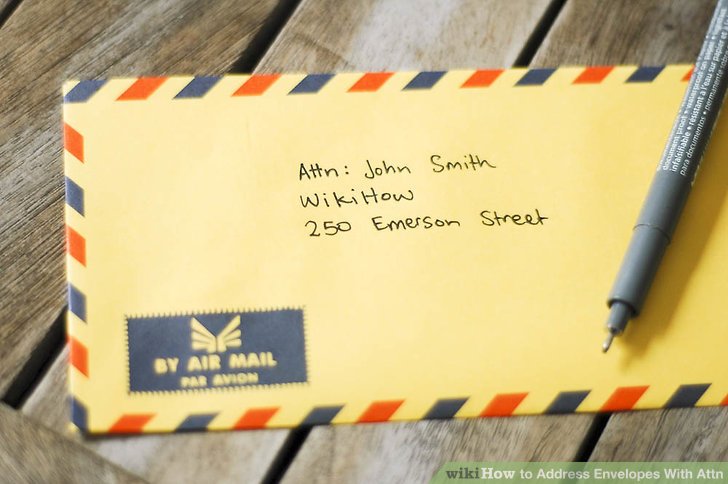Addressing an envelope correctly is a crucial skill for ensuring your mail reaches its destination without issues. Whether you’re sending a formal invitation, a business letter, or a personal note, knowing how to address an envelope properly can make a significant difference in the efficiency and professionalism of your correspondence. This guide will walk you through the essential steps on how to address an envelope, including tips for different types of mail and common mistakes to avoid.
Basic Steps on How to Address an Envelope
1. Write the Recipient’s Address
The recipient’s address is the most critical part of addressing an envelope. It should be written clearly and correctly to ensure that your mail is delivered to the right person and location. Here’s how to format it:
- Recipient’s Name: Start with the recipient’s full name. If it’s a business, include the company’s name as well.
- Street Address: Write the street address on the next line. Include apartment or suite numbers if applicable.
- City, State, and ZIP Code: On the following line, write the city, state, and ZIP code. Ensure the state abbreviation is correct and the ZIP code is accurate.
- Country (if applicable): If you’re sending mail internationally, include the country name in capital letters on the last line.
Example:
Ms. Jane Doe
123 Maple Street, Apt 4B
Springfield, IL 62704
USA2. Include Your Return Address
The return address should be placed in the top left corner of the envelope. This is important in case the mail cannot be delivered and needs to be returned to you. The format is similar to the recipient’s address:
- Your Name: Start with your full name.
- Street Address: Write your street address, including any apartment or suite number.
- City, State, and ZIP Code: Include your city, state, and ZIP code.
- Country (if applicable): Add the country name if you’re sending international mail.
Example:
John Smith
456 Oak Avenue
Chicago, IL 60614
USAAddressing Different Types of Envelopes
Formal Letters
For formal letters, such as business correspondence or official invitations, it’s essential to use a professional tone in your addressing:
- Use Full Names and Titles: Address the recipient using their full name and appropriate titles, such as “Dr.”, “Mr.”, or “Ms.”
- Include Job Titles (if applicable): For business correspondence, include the recipient’s job title and company name.
Example:
Dr. Emily Johnson
Director of Research
Global Innovations Inc.
789 Business Park Drive
New York, NY 10001
USAPersonal Letters
For personal letters, you can use a more casual approach:
- First Name or Nickname: You can address friends and family by their first name or nickname.
- Simple Formatting: Use simple and clear formatting for easy reading.
Example:
Emily
123 Elm Street
San Francisco, CA 94101
USABusiness Mail
When addressing business mail, clarity and professionalism are key:
- Company Name: Include the full company name and, if applicable, the department or attention line.
- Professional Titles: Use the recipient’s professional title to show respect.
Example:
Attention: Ms. Laura Brown
Marketing Department
Tech Solutions Ltd.
100 Tech Road
Austin, TX 73301
USACommon Mistakes to Avoid
1. Incorrect Formatting
Ensure that each part of the address is on its own line and aligned to the center of the envelope. Avoid cramming information onto a single line, as this can lead to confusion or misdelivery.
2. Incomplete Addresses
Double-check that you include all necessary details, such as apartment numbers or ZIP+4 codes. An incomplete address can delay delivery or result in the mail being returned.
3. Misspelled Names or Addresses
Verify the spelling of names and addresses before sending. Mistakes can lead to misdelivery or non-delivery of your mail.
4. Forgetting the Return Address
Always include your return address in the top left corner to ensure that undeliverable mail can be returned to you.
Special Considerations
International Mail
When addressing international mail, you need to follow specific guidelines:
- Use the Destination Country’s Address Format: Each country has its own address formatting rules. Research the correct format for the destination country.
- Include a Country Name: Write the destination country in capital letters at the end of the address.
Example:
Mr. Alain Dubois
45 Rue de la République
75001 Paris
FRANCELarge Envelopes and Packages
For large envelopes or packages, use the same principles as smaller envelopes but ensure the address is prominently displayed:
- Center the Address: Place the recipient’s address in the center of the package.
- Include Additional Details: If the package requires special handling or has multiple recipients, clearly state these details.

Conclusion
Knowing how to address an envelope correctly is a fundamental skill for effective communication. Whether you’re sending a formal letter, a personal note, or international mail, following the proper addressing format ensures your mail reaches its destination efficiently. By paying attention to detail and avoiding common mistakes, you can enhance the professionalism of your correspondence and ensure that your mail is delivered smoothly. Whether you’re handling everyday letters or important documents, mastering the art of addressing an envelope is key to successful mail delivery.



